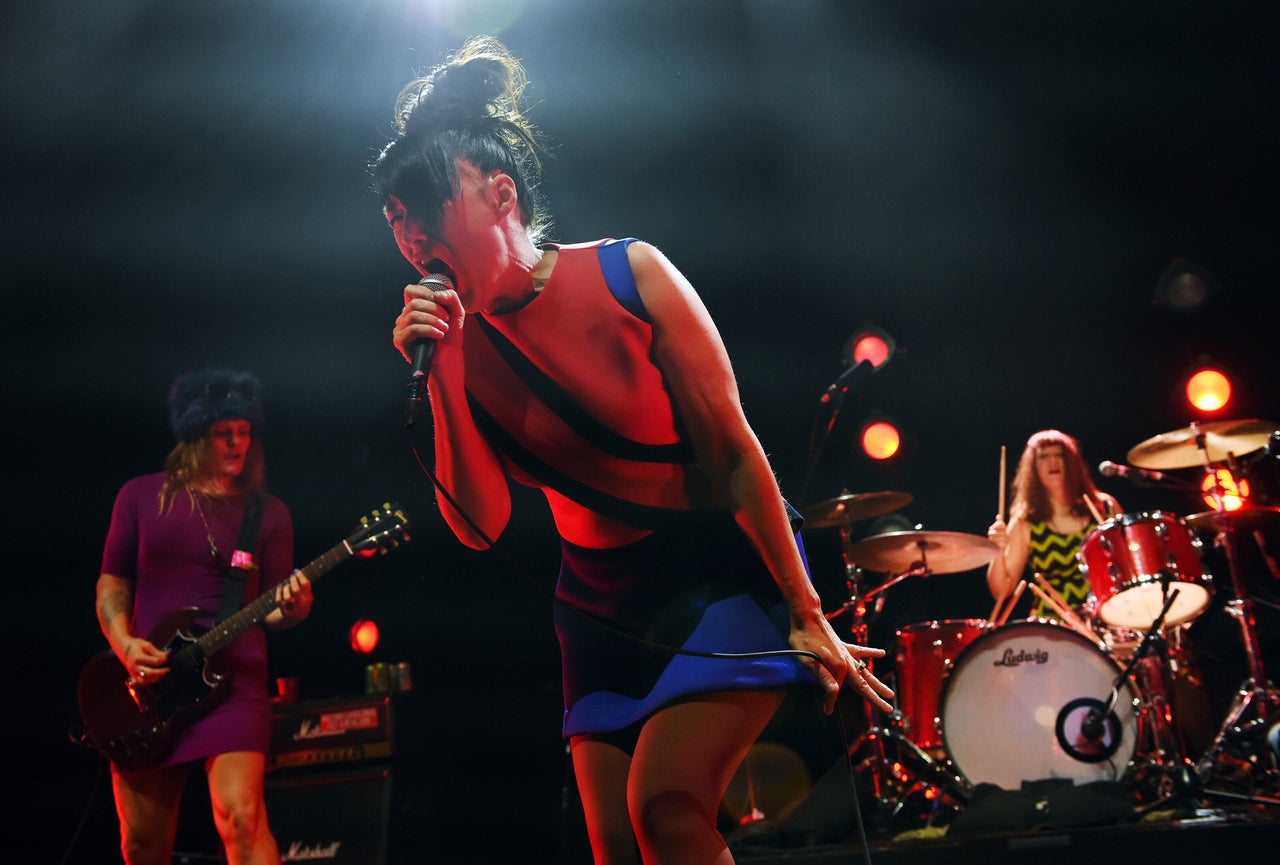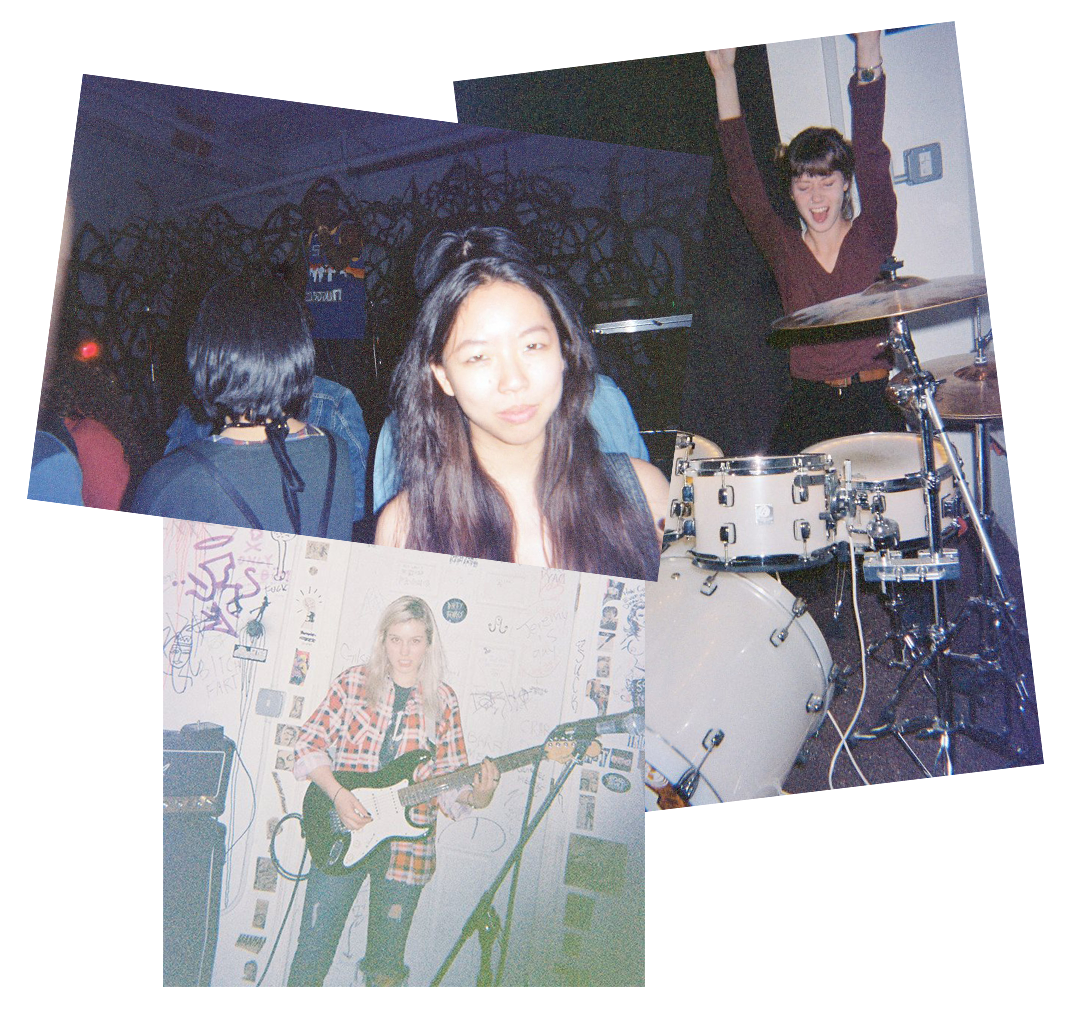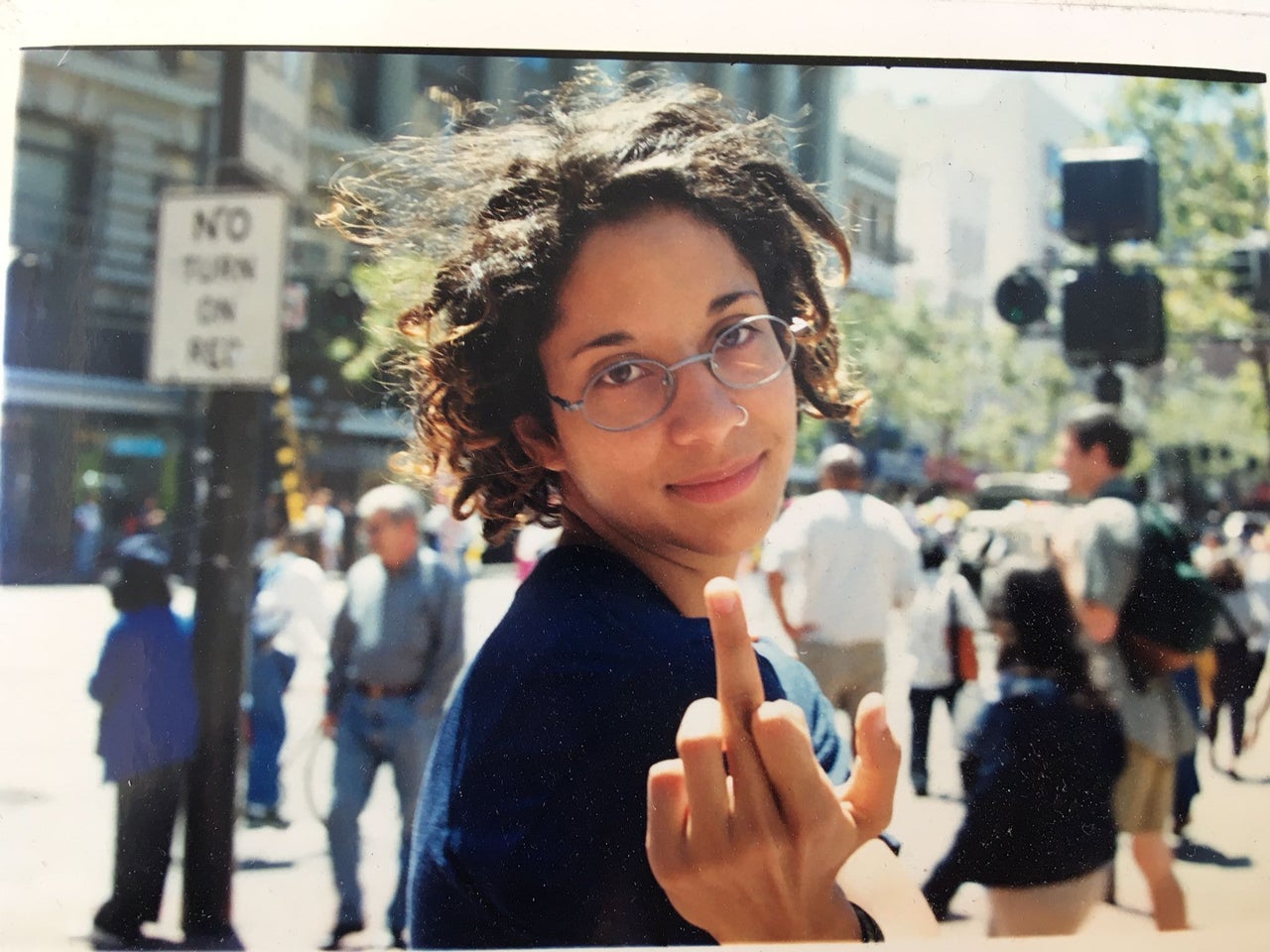[ad_1]
None of us come out of the womb feminist. While I am unquestionably a feminist now, there were times during my youth when I resisted the title, buying into the persistent stereotype of feminists as bra-burning man haters. Earlier in the pandemic, when asked how I came into my feminism during a Zoom workshop, I struggled to remember when I was first introduced to a version of feminism that I resonated with. I knew it wasn’t through reading bell hooks or Gloria Steinem, or a gender studies course, political movement or mentor — these avenues weren’t quite accessible to me as a kid. Turns out, my entry point to feminism was through Riot grrrl.
Riot grrrl, for those unfamiliar, is a feminist movement and subculture founded in the early ’90s by young women artists, activists and rockers in bands including Bikini Kill, Heavens to Betsy and Bratmobile. Riot grrrl creators made music and art that loudly criticized misogyny and heteronormativity, and challenged patriarchy in male-dominated punk spaces by demanding “girls to the front.”
My formative years were all spent in Texas, and my public school education didn’t exactly direct me to feminism. But as an angsty Asian girl coming of age in predominantly white suburbs in the South (and whose adolescence fell between the late ’90s and the mid-2000s), I was always going to find my way to riot grrrl. Like all other riot grrrls and feminists, my anger stemmed from my experiences with and extreme disdain for patriarchal violence in its many forms and an understanding that speaking out made me an outsider to polite society. I recognized how wrong it was for girls to be abused, and I relished the way riot grrrls screamed these unpleasant truths into microphones and refused to be silent.
“I’m really interested in a punk rock movement — an angry girl movement — of sexual abuse survivors,” Bikini Kill singer and riot grrrl co-founder Kathleen Hanna told Sara Marcus, author of “Girls to the Front: The True Story of the Riot Grrrl Revolution.” “I seriously believe that the majority of people in this country have stories to tell that they aren’t telling for some reason. I mean, with all that energy and anger, if we could unify it in some way.”

Chris Pizzello/Invision via Associated Press
Riot grrrl made feminism accessible and enthralling to younger generations of angsty girls and music lovers by combining feminist politics, punk music, art and DIY mentality with outputs like zines, organized meetings, shows and music festivals.
“Built on the floors of strangers’ living rooms, tops of Xerox machines, snail mail, word of mouth and mixtapes, Riot Grrrl reinvented punk,” Gossip frontwoman Beth Ditto wrote in the foreword to “Riot Grrrl: Revolution Girl Style Now!”
Riot grrrl music didn’t really reach me until I was a teenager in the early 2000s, after I’d already thoroughly consumed the Spice Girls’ brand of “girl power” — a term which, by the way, was coined by Bikini Kill in 1991.
By my teen years, I was entering my alt era and listening to new and old bands like Sonic Youth, Yeah Yeah Yeahs, Sex Pistols, Cursive, Le Tigre (also fronted by Hanna) and, of course, Bikini Kill. Other riot grrrl bands, like Sleater-Kinney and Heavens to Betsy, were also on my radar, but I was the most drawn to Hanna’s bands. And many of my favorite musicians were predecessors of, have sprung out of, or were influenced by riot grrrl: Kim Gordon, Karen O., Joan Jett, Siouxsie Sioux, Ditto, to name a few. I was categorically an “art kid” in high school, got into photography, made collages, collected zines and sneaked out to see shows downtown.
When I look back on the rest of my feminist journey, many of my earlier activities were very much informed by riot grrrl. When I first moved to New York City at 23, I formed an all-female punk band called Debbie Downer Disco with two New York University freshmen. I was the singer, and one of the only songs we would practice was a cover of “Rebel Girl.” In my mid-20s, I got involved with GRLCVLT (later renamed NYCxist) and the anti-rape culture movement to recall California Judge Aaron Persky, who became infamous for giving Brock Turner what activists (including myself) believed was a lenient sentence for sexual assault due to his white male privilege.

But I no longer see myself reflected in those same feminist activism spaces; riot grrrl has been criticized for being overwhelmingly white and trans-exclusionary. As I’ve been developing my own understandings of intersectionality and solidarity, including critiques of mainstream responses to violence that rely on increased policing, punishment and prisons, I’ve reevaluated how I’d like to engage with feminist activism and in what spaces.
I’m now a founding member of the Asian American Feminist Collective, my political knowledge has broadened, and I’ve been able to find spaces where I don’t feel “othered” or tokenized. While I recognize now that riot grrrl didn’t address everything I needed out of feminism, it was an important catalyst to my feminist awakening.
Riot grrrl’s heyday was over by the late ’90s, but its ethos and message continues through the music, publications and the many artists who have been influenced by riot grrrl and are carrying the torch. Bands like The Linda Lindas, an Asian and Latinx all-girl band, have also been bringing riot grrrl back into the spotlight. At first I celebrated The Linda Lindas as an anomaly, but that was because I had never heard of Emily’s Sassy Lime, a first-wave riot grrrl band of three Asian teens from Southern California that was active from 1993 to 1997.
Even though I discovered them decades too late, I see my teen self in their old band photos and could imagine myself as a member of Emily’s Sassy Lime far before I could ever imagine myself in Bikini Kill. Bands like Emily’s Sassy Lime and The Linda Lindas remind me that with the immigrant experience, as well as queerness, comes the desire and drive to carve out belonging within spaces that don’t always fit all of our expansiveness. But we press on.
Wendy Yao, a member of Emily’s Sassy Lime, reflected on her propensity for DIY culture growing up in an immigrant family: “There’s already a lot of values from [the immigrant experience] that resonate in terms of improvisational daily practices and resourcefulness — being creative and making the most of what you have, utilizing community in a certain way to make things happen, and not feeling like what’s already out there structurally in the world is completely speaking to you,” Yao told The Creative Independent. “If you want something to happen that relates to you, you have to create it yourself or bring together the community that works for you.”
My DIY practices look different now that I am surrounded by other like-minded feminists. Growing up in Texas, it was a much more isolated experience. But I wasn’t the only one.
After I shared my feminist genesis story during the Zoom event, my collective co-leader Salonee Bhaman said she had a similar journey.
“Puberty and adolescence were very angry times for me. I often felt like my anger [as a girl] was pathologized by authority figures, and I had to keep it hidden. Riot grrrl music gave me a space to feel angry without shame,” said Bhaman, 29, who told me she discovered riot grrrl through Bikini Kill during her middle school years in Los Angeles. “Riot grrrl music made it so clear to me that the personal was political from an early age.”
Though the movement was born in Olympia, Washington, riot grrrl made its way across the country and across oceans. Sushila Mesquita, 46, a friend based in Vienna, Austria, whom I met through a virtual feminist dance party during the pandemic, said they discovered the subculture in their 20s in the mid-’90s while working at a community radio station.
“I fell in love with Sleater-Kinney the first moment I listened to ‘Dig Me Out.’ It really changed my life,” they shared. “I really loved the anger, the feminist politics, talking about gender and queerness.”

The music played an important role in their feminist awakening, and they gravitated toward Team Dresch and the queercore movement that coincided with riot grrrl. Mesquita was so energized by this music coming out of the U.S. that they ended up flying to Olympia, Washington, with a couple of friends to attend the first Ladyfest in 2000. “Everyone was so friendly and happy to be there. We made new friends, and everyone was super excited, so there was so much energy in this small town.”
Armed with press badges and being the only Europeans at the festival, they were able to befriend and interview a majority of the bands. Afterward, Mesquita volunteered for Ladyfest Hamburg in 2003 and then co-organized Ladyfest Vienna in 2004 and 2005. “They were really trying to build networks that were also transnational,” Mesquita said. After the first one, Ladyfests sprung up across the globe, on every continent except Antarctica.
Mesquita still sees the effects of riot grrrl and Ladyfest in Vienna, and the DIY influence of riot grrrl lives on in them.
“I have been politicized pretty much through riot grrrl and this kind of feminist organizing. I co-organized several festivals. I also co-founded a feminist DJ collective in Vienna and organized a lot of parties afterward,” Mesquita said. “But I also felt like there was something missing from the wider Ladyfest culture. I could feel it, but I think only later I really got to think about this more, reflected and asked myself why it was so white. It was really painful, to see a part of me does not belong to this.”
Mesquita has since become disillusioned by white-dominated spaces like Ladyfest, and they now solely organize with other queer and trans feminists of color.
“Though my feminist heroes are the people who made up the Combahee River Collective, and Shirley Chisholm, and Florynce Kennedy and Patsy Mink, I think there’s still a part of me that really resonates with the punk rock ethos of riot grrrl music,” Bhaman said. “It’s what makes me believe in the enduring power of direct action protest.”
Even today, riot grrrl is spreading its punk feminist ideologies across the world. On a Bikini Kill demo tape upload on YouTube, I found a hopeful message in the comments: “Just discovered this. Really love riot grrrl style and music. Hopefully new riot grrrl trends will form to be more inclusive of non-white women, non-binary people and trans women.”
[ad_2]
Source link
